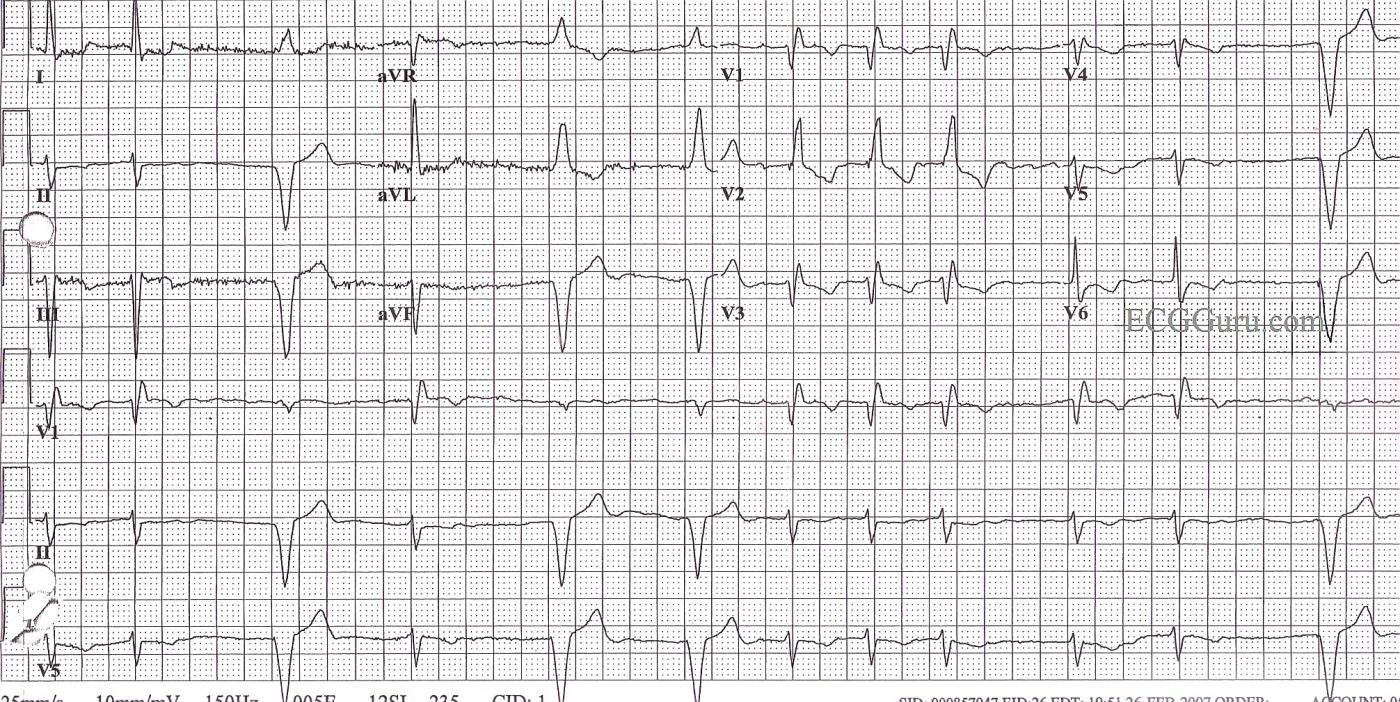Lots of information in this ECG! The underlying rhythm is atrial fibrillation with a controlled rate. The QRS is .12 seconds in duration, with an rSR' pattern in V1 and a wide s wave in Leads I and V6, indicating right bundle branch block. In addition, the axis is leftward - Leads I and aVL are upright and Leads II, III, and aVF are negative. There is no other obvious reason for the left axis shift, and therefore, the diagnosis by exclusion is left anterior fascicular block. RBBB and LAFB often appear together, as the right bundle branch and the anterior fascicle of the left bundle share the same blood supply from the left coronary artery. ALSO, this patient has a right ventricular pacemaker, and is pacing appropriately when the atrial fib slows. Pacer spikes are not readily seen, but the width of the QRS, the axis of the wide QRS complexes (left), and the timing (after a pause) all support the paced rhythm diagnosis. V5 and V6 actually show a very tiny hint of a spike. The T wave inversions seen in the upright leads are common with RBBB, and are usually considered normal in this setting.
All our content is FREE & COPYRIGHT FREE for non-commercial use
Please be courteous and leave any watermark or author attribution on content you reproduce.



Comments
re: why tiny pacer spikes
Also maybe also nice to know why the pacer spikes are so tiny. Maybe it is in one of your stips in this blog
Small pacer spikes
Pacer spikes are small in modern pacemakers. On monitor strips, spikes may be invisible, as they are removed as artifact. Most monitors can be set to put the spikes back in. Perhaps some of our ELECTROPHYSIOLOGY GURUs would like to comment here.
Dawn Altman, Admin
Pacer spike size
I'm not in an EP lab, but it has always been my understanding that the old pacemakers (called unipolar) had only 1 pole near the tip of the catheter, but a second near the "can". This large distance between the 2 poles in the inappropriately named unipolar pacemakers was responsible for the size of the large spikes seen on ECG's. The modern pacemakers are referred to as bi-polar and have 2 poles, both located at the tip of the catheter and relatively close to each other. The short distance between these 2 poles results in a much smaller spike.
Walter A. Mueller, CCT, CRAT
Small pacer spikes
Thanks so much, Walter! Great explanation.
Dawn Altman, Admin